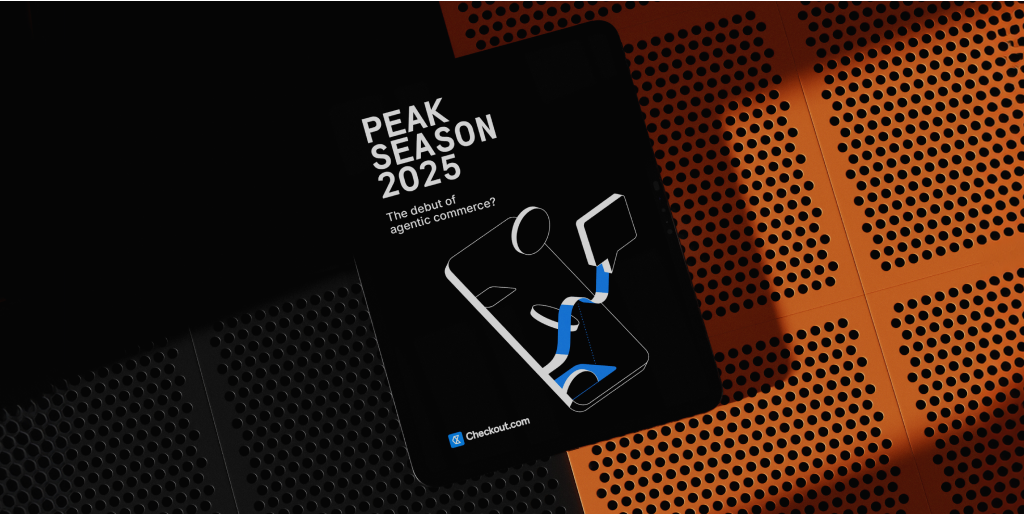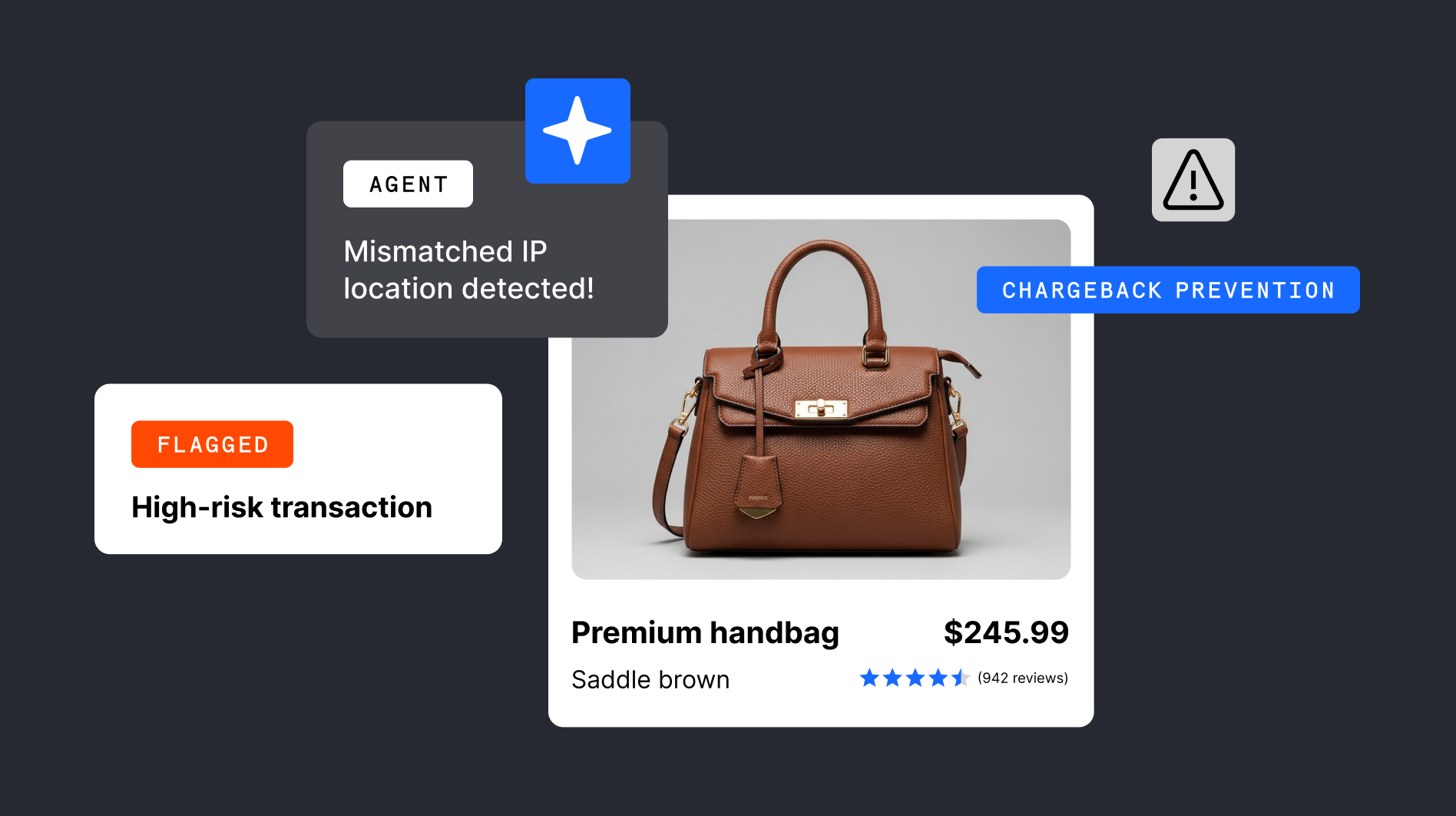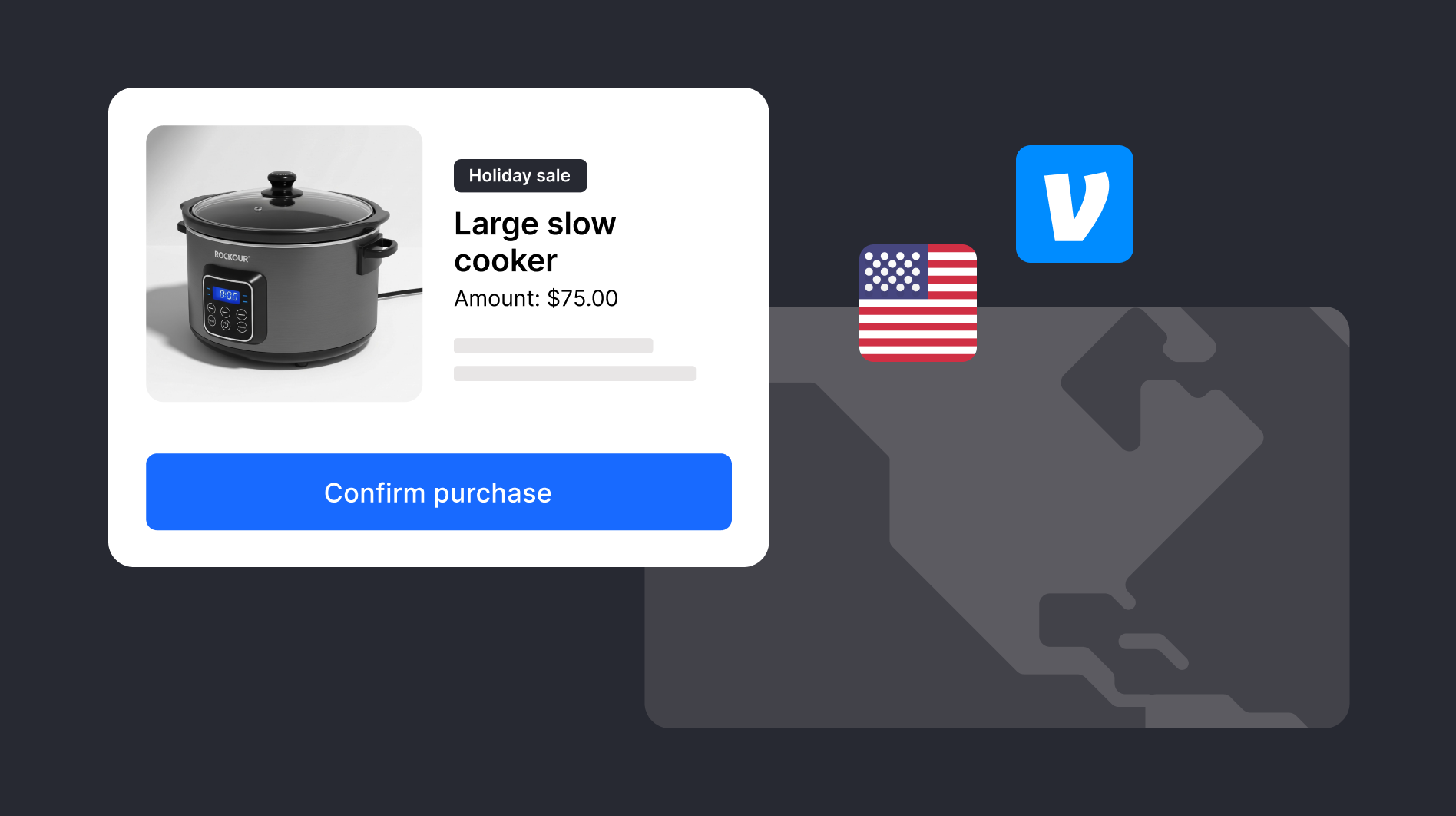Buy now, pay later (BNPL) has surged in popularity in recent years – driven by ongoing economic uncertainty, changing consumer expectations, and the continued growth of online shopping.
According to Statista, BNPL services accounted for approximately 5.1% of all ecommerce transaction value worldwide in 2023, totaling around $316 billion. This figure is projected to reach $442 billion by 2027, maintaining a 5% market share. Notably, eight of the top 10 BNPL markets in 2023 were located in Northwestern Europe.
For merchants, offering this fast-growing payment option is no longer a nice-to-have. If you don't provide it, your competitors likely will.
And while there’s an obvious advantage to consumers in the ability to spread out the cost of high-ticket items, there are numerous benefits of BNPL for merchants in the form of higher sales, boosted loyalty, and the ability to attract a wider range of customers.
Below, we explain BNPL for merchants, explore some of the best known providers, and detail the key benefits of this alternative payment method.
What is BNPL?
BNPL is a type of finance that allows consumers to purchase goods and services and pay for them later. Customers can spread the cost over time, making high-value purchases more affordable.
BNPL options are usually offered by merchants in partnership with a BNPL provider, which handles the financing and payment processing for the purchase.
How does BNPL work for merchants?
After signing a contract with Checkout.com, you can integrate BNPL providers into your checkout. Where you choose to advertise their service in the customer journey is up to you, but advertising it on your product pages – rather than as a surprise at the point of purchase – can help to encourage sales.
When your customer chooses to BNPL, your provider will run a soft credit check to establish whether they can actually pay back the loan. These checks are usually conducted on the checkout page, so there’s no need for your customer to be taken on to a third party site.
Once approved, Checkout.com pays you the full amount that your customer owes at the time of purchase. The customer then pays the provider an initial amount and the rest in installments over an agreed period of time, which can vary depending on their means and the provider’s terms.
In most cases, the service is interest-free for customers. As the merchant, you simply pay a fee for every transaction completed, typically in the region of 2-8% of the sale cost. Using a BNPL service generally won’t affect your customers’ credit score, but providers will charge them a late payment fee if they miss an installment. Some providers also offer financing options that aren't interest-free and may impact customers' credit scores.
BNPL providers
There’s a huge number of BNPL services to choose from. Although all operate on the same basic principle, they can have very different terms and conditions, affecting the frequency of repayments, merchant fees, late payment fees, and the types of payments they’ll accept.
Here are some of the best BNPL services for merchants:
- Klarna – serving more than 147 million global shoppers and 450k retail partners, is the Swedish payment service provider that offers customers the option to pay for their purchases in three (in DK, FR, IE, IT, NL, PT, ES and UK) or four (US, AU, CA and NZ) interest-free installments. It also allows you to offer your customers a ‘Pay in 30 days’ option and 36 months of financing.
- Alma – a French BNPL provider operating across FR, BE, LU, NL, PT, DE, IT and ES. Alma allows consumers to split payments into two, three or four installments, or defer payment by up to 30 days. Known for its smooth UX and high acceptance rates, Alma is widely used by fashion, travel, and services merchants.
- SeQura – based in Spain, SeQura offers flexible payment solutions for Southern Europe and Latin America. Customers can choose to pay in over 24 installments. SeQura is especially popular among fashion and electronics retailers.
- Tabby – is a BNPL service that allows consumers in the UAE to split their purchases into four interest-free payments, both online and in-store. It offers a Shariah-compliant payment method without any interest or fees, provided payments are made on time. Tabby also provides access to exclusive deals and discounts from various brands, enhancing the shopping experience for users.
- Tamara – one of the leading BNPL providers in MENA, used by thousands of leading retailers across the region to offer flexible finance options to their customers. BNPL is gaining significant traction globally and in the GCC, expected to reach ~$1 trillion GMV by 2028.
- Afterpay – an Australian company that allows customers to pay for their purchases in four interest-free installments over six weeks.
- Zip (formerly QuadPay) - another Australian BNPL service that allows customers to pay for their purchases in four interest-free installments, Zip charges a merchant fee based on the interest fee period you offer your customers.
- Laybuy – a New Zealand-based BNPL service that allows customers to pay for their purchases in six interest-free installments. Laybuy also gives you access to a Merchant Dashboard that you can use to analyze sales performance and shopper behavior.
- Zebit – a US-based service that offers no-credit-needed financing options for customers and the ability for your customers to pay over six months. Once an order is accepted (subject to an evaluation and underwritten at checkout) your customer pays between 20% and 35% upfront, and the remainder in installments as often as they get paid.
- PayPal – although not known predominantly as a BNPL provider,PayPal offers its own interest free installment loan service called Pay in 3 (although depending on where the merchant is based, different Pay Later options will be available. It’s available for purchases between $30 and $1,500 and doesn’t charge late fees.
- Affirm – an American BNPL provider targeted at online small businesses that are based in – or that have an entity and bank account in - the US. Affirm claims to work with 245,000 merchants and to have more than 40 million customers in its network. The provider’s distinguishing feature is its ‘Adaptive Checkout™ technology’, which tailors the payment options offered at checkout to individual customers. These options include four interest-free payments every two weeks to longer payment plans of up to 36 months
When choosing a BNPL provider, consider which is the best fit for both your needs and your customers’. Sure, popularity is one useful indicator, but check whether they’re used to working with businesses that operate in your sector and that process a similar volume of transactions.
You should also make sure to compare the fees you’ll be charged by each provider to ensure you’re getting a good deal, and find out whether any other useful services are included. For example, Klarna offers an AI-powered marketing service to businesses with +£3m in sales that delivers shoppable online content.
Finally, from the consumer perspective, do they offer your customers plenty of choice and flexibility? And are their terms suitable for customers in your target market? For example, younger consumers may prefer longer repayment terms with lower individual installments.
What are the benefits of BNPL for merchants?
By making your products more accessible to a wider range of consumers, offering BNPL can be a great way to attract and retain customers, and grow your business. Below, we detail some of the other key benefits:
Increase your sales
By offering flexibility to pay for goods in installments, you can improve the chances of a successful sale and increase the number of sales your business is making overall. By offering convenience, and a less intimidating overall basket cost, you may also see a reduction in abandoned carts.
Learn more: How to avoid cart abandonment during peak season
Increase your average order value
BNPL can also help merchants increase their average order value. As customers can pay in affordable chunks, they’re more likely to add higher value items to their basket and to add more items overall.
Improve your cash flow
By increasing both the number of sales you’re making and the average value of each sale, you’re getting a lot more cash coming into your business at once, which is great for ensuring a healthy cash flow.
Boost customer loyalty
Customers are more likely to make repeat purchases with your business if they know you offer flexible payment options, which is a great way to build long-term brand loyalty. When customers are comparing products on two different websites, offering BNPL could be the reason they choose you over your competitor.
Attract younger customers
According to Statista, users of BNPL are predominantly millennials and Gen Z. Younger consumers are the most likely to shop online but typically have less accumulated wealth than older generations. They are also less likely to have a credit card, which could otherwise perform a similar function. By giving these customers the option to spread their payments out over a more affordable period, you’ll be able to attract younger customers.
Use it as a marketing tool
You can use BNPL as a marketing tool by promoting it as a financing option to potential customers. Broadcast your use of a BNPL provider in any promotional material or online advertising you put out. It’s also powerful when featured prominently on your product pages to encourage wavering customers.
Reduce your risk of chargebacks and fraud
Since your BNPL provider handles the financing and payment processing, you can reduce the risk of costly chargebacks. Your BNPL provider also takes care of the credit check and often assumes all credit and fraud risk for every transaction.
Learn more: How to prevent BNPL fraud
Are there any risks to BNPL?
Currently, the risks to merchants are minimal. Of course, your customers could still default on payments, and you will have to account for the additional fees of using the service in your budget, but this cost is more than likely to pay for itself when you take into account the benefits.
There is likely to be more regulation in the BNPL space in the next few years, which is not a risk as such but something for merchants to be mindful of and to stay up-to-date with.
When is BNPL the right method for my business?
Offering BNPL can be a smart choice for many businesses, helping to boost conversions, revenue and loyalty, but that doesn’t mean all merchants should implement BNPL.
So, when is BNPL right for your business and in what scenarios might it not be a good fit?
BNPL benefits both high-value and lower-cost merchants. High value sellers can make it easier for their customers to pay for big ticket purchases that might otherwise be unaffordable, while merchants selling lower value items can boost their average order value by allowing their customers to pay for bigger baskets.
That said, some businesses that retail lower value items might be better off focusing on increasing their overall customer numbers or sales volume rather than trying to boost the value of individual baskets.
Additionally, online businesses that sell products or services targeted at a younger demographic (18-45) will benefit more from BNPL than those whose customers are over 45, as older consumers are generally more capable of paying for bigger purchases up front.
How to choose a BNPL provider
While the essential features of BNPL for businesses are very similar across providers, there are differences that could make some providers more suitable for your needs than others.
The main factors to consider are:
- Location - first thing’s first: are the BNPL provider’s services available to businesses and customers in your market? For example, some BNPL providers like Klarna are available in multiple countries, while others, like Affirm, require your business to be based in the US or at least to have a US bank account or majority US customer base. You could choose to partner with multiple providers, allowing you to expand your global reach and to offer the BNPL service that is most popular in each region, which will boost loyalty and conversions
- Industry segments - different BNPL providers have different levels of risk they are willing to take with certain types of merchants. For example, businesses in the Travel or Digital Goods sectors might need to meet extra requirements to offer BNPL services to their customers. These requirements can influence which BNPL provider a merchant chooses to work with.
- Repayment terms - most BNPL providers let customers repay in three to four interest-free installments, typically over a period ranging from three to 36 months. If you sell particularly high-value items or you have a high average order value, you should choose a BNPL provider that allows your customers to pay in more installments over a longer period of time
- Credit limit - providers set minimum and maximum limits on how much your customers can spend in order to be eligible for BNPL. Choose a provider with credit limits that align with your average order value and that are sufficiently high enough to allow customers to purchase your most expensive goods. For example, Affirm offers a minimum of $50 and a maximum of $17,500, while Klarna has now done away with predefined limits in favor of a new automated system that decides each customer’s purchasing power based on their payment history and outstanding balance
- Services - in recent years, many BNPL providers have enhanced their offerings to accommodate a wider range of business needs. One of the biggest changes is BNPL for B2B transactions. Another is subscription payments, allowing your customers to split the cost of subscription payments into smaller installments
How to set up BNPL
Now you’ve chosen a suitable BNPL provider for your business, it’s time to get set up. You first need to fill in an application form, providing information about your business, your terms and conditions, your prices and shipping costs, and your customer service. The provider will assess this information to check whether or not your business is eligible for its services.
Once approved, you can integrate the BNPL service into your checkout. If you’re partnered with a payments platform like Checkout.com, it’s easy to get set up. Simply contact your account manager and they’ll help you with the process.
For example, with Klarna, you need to create a session when the customer arrives at checkout, launch the Klarna widget so they can choose it as a payment method, make an authorization request and place the order, and then capture the payment. Your account manager will also show you how to test BNPL in a safe sandbox environment so that you can check it works properly before making it available to your customers.
Accept more payment methods with Checkout.com
If you're looking to offer BNPL options such as save now, buy later to your customers – and serve the right options for different regions – Checkout.com can help.
Whatever you sell, and whoever your customers are, Checkout.com’s Unified Payments API gives your business access to the world’s most popular payment methods, digital wallets, and global card schemes.
We can help you find the local payment methods popular with customers in the regions you operate in. That means you can find just the right options for your needs, make your customers happy, and boost sales.
Find out more and check out our full range of payment methods.











.png)




